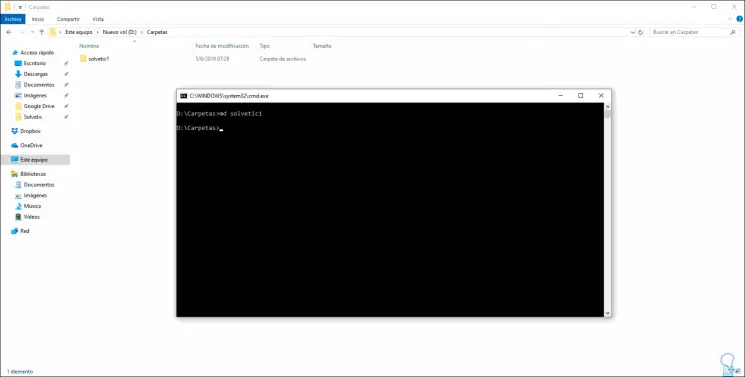
- How to create folders in windows 10 how to#
- How to create folders in windows 10 full#
- How to create folders in windows 10 windows 10#
- How to create folders in windows 10 pro#
Note: You can copy the folder path from the File Explorer application so that there are no mistakes.ĥ. Type cd and the folder path you want to delete and hit Enter key.įor example, cd C:\Users\ACER\Documents\Adobe as shown below. Click Yes in the User Account Control pop-up, if prompted.Ĥ. Type Command Prompt and click the Run as Administrator option in the right pane.ģ. Press Windows + Q keys to launch the search bar.Ģ.
How to create folders in windows 10 how to#
Here’s how to delete folders and subfolders in Command Prompt:ġ. Both of these commands can also be run in the Windows Recovery Environment.

How to create folders in windows 10 windows 10#
Note: Change the path in the above command to the folder path which you want to delete.Īlso Read: How to Delete Win Setup Files in Windows 10 Method 2: Delete Folders and Subfolders in Command PromptĪccording to official Microsoft documentation, the del command deletes one or more files and the rmdir command deletes file directory. Remove-Item -path C:\Users\ACER\Documents\large_folders -recurse Type the following command and hit the Enter key. Click on Start and type powershell, then click on Run as administrator.Ģ. Method 1: Delete Folders and Subfolders in Windows PowerShellįollow the steps mentioned below to delete large folders using PowerShell app:ġ. In this article, we will walk you through various methods of doing the same. These additional processes contribute greatly to the overall delete operation period.įortunately, there are a few ways to bypass these unnecessary steps and speed up the process to delete large files from Windows 10. Apart from checking and calculating, Windows also analyzes the files in order to display updates on the file/folder that is being deleted at that moment.
How to create folders in windows 10 full#
Your files might be corrupt or full of malware due to attack by malicious programs.Your private or sensitive files can be deleted so that no one else can access these.Your files or folder might have duplicated accidentally.


However, the files that you delete are not permanently deleted by the PC, since the files will still be present in the Recycle bin.
How to create folders in windows 10 pro#


 0 kommentar(er)
0 kommentar(er)
